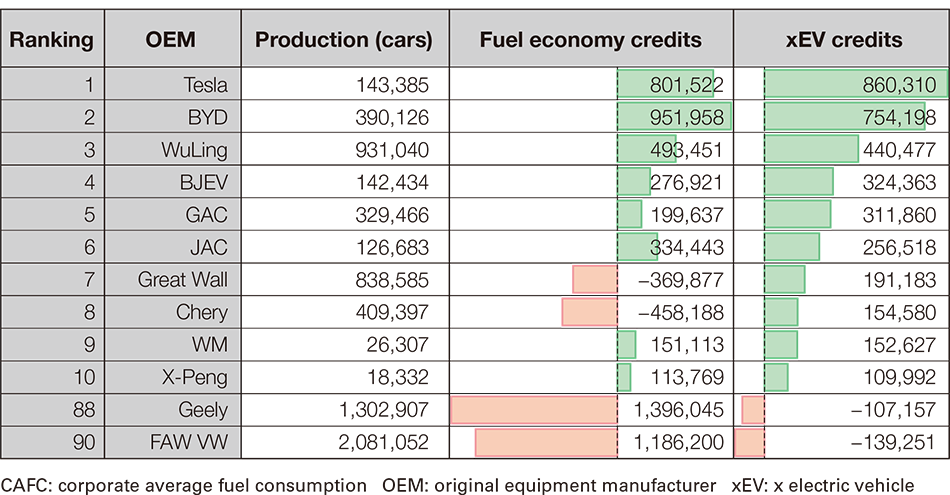GLOBAL INNOVATION REPORTActivities in Europe and China toward Achieving Carbon-neutrality in the Automotive Market
Highlight
Amidst increased action on environmental protection around the world, Hitachi Astemo is accelerating R&D at its overseas operations to respond the dynamic technological transformation that includes carbon neutrality and electrification. This article looks ahead to the next generation of mobility and what Hitachi Astemo is doing in Europe and China.

Introduction
Amidst increased action on environmental protection around the world, the automotive sector is among industries being called upon to embrace a dynamic technological transformation that includes carbon neutrality and electrification. As a global supplier, Hitachi Astemo, Ltd. is accelerating research and development (R&D) at its overseas operations in an effort to respond to these developments.
This article looks ahead to the next generation of mobility, describing the automotive markets in Europe and China and what Hitachi Astemo is doing in those regions.
Automotive Market and Carbon Neutrality Policies in Europe
Electrification is advancing rapidly in the European automotive market, which has seen the further strengthening in 2020 and 2021 of Europe’s corporate average fuel economy (CAFE) regulations, said to be among the world’s strictest. These regulations assess the fuel economy of the vehicle fleets sold by each manufacturer against standards defined by vehicle weight range. Failure to comply can result in large fines. Moreover, specialist battery electric vehicle (BEV) manufacturers that are well within the emission quotas can on-sell the associated credits to companies that sell large numbers of internal combustion engine (ICE) vehicles. This can be a major source of income, with some companies earning hundreds of millions of dollars (USD) in this manner. The system favors manufacturers who produce large numbers of BEVs or plug-in hybrid electric vehicles (PHEVs), also incorporating a super-credit incentive mechanism to encourage their uptake. While it has been reported that some manufacturers will likely be obliged to pay fines in the order of billions of dollars (USD) for FY2020, corporate disclosures and other investor information indicate that they have managed to avoid this.
Nevertheless, some manufacturers are saying that they will struggle to keep up with the tightening of standards in 2021. Given that the rules are to be further tightened in 2025 and again in 2030, with the potential for life cycle assessment (LCA) provisions to be added, Europe can look forward to continued electrification. These tightened standards and proposals by national governments to ban the sale of ICE vehicles (known as “ICE bans”) are prompting the construction of battery manufacturing plants and the rollout of vehicle charging networks. This has been accompanied also by considerable discussion around the establishment of hydrogen distribution networks and the formation of alliances for the development of fuel cell vehicles, especially commercial vehicles. As the development of commercial-scale vehicle production tends to work on a cycle of roughly five years, car parts suppliers are now engaged in vigorous competition to have their products adopted in new models scheduled to commence production in 2025 when the further tightening of standards is due.
While the electrification of the vehicle market in Europe is being driven by the continent’s CAFE standards, as noted above, this represents only one step toward the greater goal of achieving carbon neutrality in 2050 as laid out in the European Green Deal (see Figure 1).
Figure 1 | Overview of European Green Deal
According to the Sustainable and Smart Mobility Strategy published by the European Commission in late 2020, transportation is currently responsible for one quarter of Europe’s greenhouse gas emissions. Although the number varies somewhat in different parts of the world, the average working life for a car is around 13 years. This means that, if the 2050 target is to be achieved, all new vehicles will need to become carbon neutral by 2035 at the latest. In other words, things like news reports of nations planning to ban the sale of ICE vehicles by 2030 or 2035, or the proposed Fit for 55 package announced by the European Union (EU) in July 2021, are all necessary measures if you back-calculate from the goal. In order to achieve its goals, Europe’s mobility strategy includes the establishment of three million EV charging stations and 1,000 hydrogen stations by 2030, an expansion of high-speed rail, the introduction of zero-emission ships and aircraft, the promotion of integrated electronic ticketing across different forms of public transportation, and the widespread adoption of autonomous driving.
While opinions vary on the provision of mobility-as-a-service (MaaS) using level 4 or 5 autonomous vehicles, given that some expect to see this introduced on a trial basis around 2025 with full commercialization to follow around 2030, there is no doubt that some of these proposals have the potential to become reality.
Along with the rising number of electric vehicles, the European Commission is also seeking to accelerate decarbonization and the transition to clean alternative fuels, having published the EU Strategy for Energy System Integration on the decarbonization of the electricity supply and also the EU Hydrogen Strategy for a Climate Neutral Europe (see Table 1). The financial aspects of these European strategic initiatives for achieving decarbonization are also considered critical. Along with prioritizing green sectors in the allocation of pandemic recovery funds, this includes taking active steps to encourage not only public-sector funds, but also private investment aimed at achieving ambitious targets. Specifically, this has involved policies aimed at exerting influence on the allocation of capital in the upstream reaches of the economy. Examples include the Taxonomy Regulation intended to categorize and clarify green activities and the associated Revision of Non-Financial Reporting Directive (NFRD) that specifies what is to be reported. As the latter provides for the disclosure of information useful to those investors concerned about environmental, social, and governance (ESG) investment considerations, it has the potential to increase the cost of finance for those companies that fail to get onboard with this new direction. Meanwhile, work continues on establishing the regulatory systems intended to prevent European companies from being put at a competitive disadvantage by the additional costs that come with making industry greener, including the somewhat controversial Carbon Border Adjustment Mechanism (CBAM). Digital technology will be essential for the stricter tracking of specific emission volumes, something that also ties in with LCA. Europe announced a set of Digital Compass policies in March 2021, laying out a European strategy for data that was formulated with the circular economy in mind. The use of digital technology is also a prerequisite for data management in battery recycling.
The way that Europe has gone about establishing these comprehensive regulatory policies and pursued the international deployment of joint public-private initiatives provides an insight into its adoption of what is in effect a “rule-making strategy” intended to secure broad-based competitiveness, highlighting also how the Green Deal itself is a strategy for growth.
Increasingly Diverse Mobility
Europe has embarked upon these comprehensive measures aimed at achieving carbon neutrality in 2050 and this is something that has been underpinned by public support, with those political parties that push environmental policy gaining an increasing presence.
It does not necessarily follow, however, that the spread of BEVs and PHEVs has been smooth sailing. While sales are now growing rapidly, with national governments offering financial incentives to encourage uptake, it is also clear that those areas experiencing strong growth in electric vehicles are also suffering from a shortage of charging stations, notably in European cities where cars are frequently parked on the roadside. Given the rising number of BEVs and PHEVs, there is now a pressing need to use digital technology to enhance charging systems, including standardization of the station booking and payment systems. Along with the existing provision of information on which stations are currently available, it is anticipated that this will also include things like the use of blockchain technology for integration with dynamic pricing and push-style recommendations on where and when to charge, generated by artificial intelligence (AI) from an analysis of driving and location data. As electric scooters (e-scooters) have become increasingly common in European cities over recent years, it is recognized that taking advantage of such diverse forms of mobility can also have a role to play in reducing carbon dioxide (CO2) emissions (see Figure 2).
The electrification of motorcycles is another important option amidst this growing diversity in modes of transportation. Meanwhile, something else we can look forward to in the 2030s that has the potential to make up somewhat for this lack of charging infrastructure will be the use of autonomous driving technology to deploy robot vehicles in urban areas, as discussed above. While it has become clear that numerous challenges lie in the way of achieving the ambitious goal of carbon neutrality in 2050, Europe appears set to pursue a combination of different policies tailored to how circumstances progress over time. We will also need to pay attention to how they go about updating those targets.
Future Trends and Activities of Hitachi Astemo
The previous section looked at the comprehensive actions being taken in Europe aimed at carbon neutrality in 2050, work that has only just begun. Unfortunately, there is also scope for discontent among end users should there be a failure to deal appropriately with the many and varied issues that will likely arise in the path to electrification. There is no doubt that this has the potential to undermine the policy foundations that support the current strategic measures. In the worst case, it could derail the plans altogether. Vehicle electrification is already a factor in achieving the overriding goal of carbon neutrality, and the use of digital technology to introduce practices based on connectivity and the Internet of Things (IoT) is likewise inescapable. Innovation based on new technology will resolve the challenges of the future, and Hitachi has a role to play in utilizing its superior technologies to assist in overcoming these societal challenges.
Hitachi has established itself as a leading supplier of inverters for BEVs and PHEVs and already has both 400-V and the world’s first 800-V models in full commercial production. Work is also proceeding on reducing CO2 emissions from the production process along all steps of the supply chain. At Hitachi Astemo UK Ltd., for example, photovoltaic power generation is being used to help decarbonize the supply of electricity (see Figure 3). Such activities will become more important than ever in the future in the context of LCA as well as other considerations.
Toward Carbon Neutrality in China
China, the world’s largest emitter of CO2, has promised to become carbon neutral before 2060, and to begin cutting its emissions within the next ten years. In the wake of the announcement, several proposals are being explored for how China could reach neutrality before 2060. The plans differ in their details, but agree that the automotive industry could cut a lot of carbon emissions because it heavily relies on gasoline and generates carbon emissions throughout the whole production process(1). Switching from gasoline cars to electric ones will be the approach to carbon neutrality in the following years for the automotive industry in China. Meanwhile, implementation of green energy, such as solar, wind, and hydropower, in the production process is also planned by original equipment manufacturers (OEMs) and tier 1 suppliers to create a green supply chain.
To force OEMs to change their focus from traditional gasoline engines to electrification, the Chinese government has defined a technical roadmap for x electric vehicles (xEVs*) and released a strict regulation on corporate average fuel consumption (CAFC) and new energy vehicle (NEV) credit. The CAFC/NEV regulation requests OEMs take actions not only in terms of the fuel economy of ICE, but also in the area of BEV. It put great pressure on OEMs in China, major OEMs had from several thousand to a million negative credits in 2020 (see Table 2).
To meet the strict regulation, OEMs in China have accelerated the transformation from traditional ICE to electric powertrains. The ratio of ICE is expected to be reduced to 47.6% and the xEV (BEV and HEV) ratio is expected to increase to 52.2% (see Figure 4).
- *
- The generic name for electromotive vehicles such as hybrid electric vehicles (HEVs), plug-in hybrid electric vehicles (PHEVs), and fuel-cell electric vehicles (FCEVs).
Hitachi Astemo in China
As noted above, in developing products and technologies suitable for the China market, it is important to pay close attention to trends and to provide suitable technical solutions that have been formulated in line with these trends and carefully attuned to the circumstances in China.
Accordingly, Hitachi Astemo provides highly efficient electric components such as inverters and motors in China, and can flexibly meet customer applications (see Figure 5). With the advantages in design flexibility and high performance, Hitachi Astemo has been awarded a big order from one of the top three China OEMs recently.
Other than single components, inverters and motors, Hitachi Astemo is also actively tracking technical trends in China and deeply studying e-Axle systems, which will be the mainstream systems for BEV applications in China.
It is undoubtful that carbon neutrality will be the main trend in China over the next ten years. Hitachi Astemo is making a deep dive into the carbon neutrality activities in China and is on a good track to expand its product portfolio.
Conclusions
It is anticipated that carbon neutrality and other such targets intended to protect the environment will become ever more important in the future. In its role as a global supplier, Hitachi Astemo will continue working toward the achievement of sustainable mobility, drawing on its network of operations around the world and collaborating alongside other parts of Hitachi on group-wide R&D.












